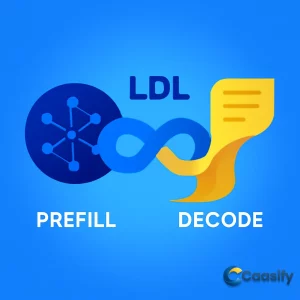Introduction
LLM inference optimization is essential for improving the performance of Large Language Models (LLMs) used in tasks like text generation. As LLMs become increasingly complex, optimizing phases like prefill and decode is key to enhancing speed, reducing costs, and managing resources more effectively. This article dives into strategies such as speculative decoding, batching, and memory management, focusing on techniques like quantization, attention mechanisms, and parallelism across multi-GPU systems. By understanding and implementing these optimizations, businesses can unlock the full potential of LLMs, ensuring they are efficient and sustainable in real-world applications.
What is LLM Inference Optimization?
LLM Inference Optimization refers to methods used to improve the performance of large language models (LLMs) during tasks like text generation. The goal is to make these models faster, more efficient, and more affordable to run by improving memory usage, reducing latency, and optimizing how data is processed. This involves strategies like reducing memory requirements, optimizing computation processes, and using specialized techniques such as batching and speculative decoding.
In this article, we explore the world of Large Language Models (LLMs) and dive into topics like inference, optimization, and parallelism. To better understand the intricacies of LLMs and GPU memory management, you may find this resource on GPU performance optimization helpful. It covers essential concepts like latency and throughput, which are crucial for assessing the effectiveness of a deep learning system.
Conclusion
In conclusion, optimizing LLM inference is crucial for improving the efficiency and performance of Large Language Models (LLMs) in real-world applications. By focusing on key strategies like prefill and decode optimization, speculative decoding, and batching, you can significantly reduce resource consumption and enhance speed. Additionally, techniques such as memory management, quantization, attention mechanisms, and parallelism across multi-GPU systems contribute to a more cost-effective and scalable solution. As the demand for more powerful AI models grows, continuous optimization will play an essential role in making LLMs more sustainable and accessible. Stay ahead by embracing these optimization techniques to ensure your LLMs remain efficient and effective in the evolving landscape of AI technology.Snippet: Learn how LLM inference optimization, prefill, decode, and batching strategies can enhance the performance and efficiency of Large Language Models.
Optimize GPU Memory in PyTorch: Debugging Multi-GPU Issues (2025)

